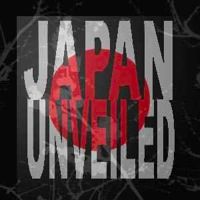





| News from Japan that may raise an eyebrow, or indeed both eyebrows ... You can also subscribe to the RSS-feed. |
In a bold choice, the cross-dressing Japanese celebrity Ikko was on Friday appointed honorary goodwill ambassador by the Korea Tourism Organization. Looking radiant in a flowery dress at the event, Ikko said, "I can't imagine myself without Korea."
Loin-clothed Japanese men, some with babies in their arms, frolic in the mud in a festival dedicated to the gods of the rice fields. The "hadaka matsuri", or "naked festival", is a ritual held annually at Mimusubi shine in Yotsukaido, east of Tokyo, to pray for a good harvest and fortune.
The forest at Aokigahara features breathtaking views of Mount Fuji but in Japan it is known as the No. 1 place where people go to commit suicide. Suicide rates in Japan were up 15 percent this January and the Japanese government has pledged a serious effort to cut the number by 2016.
Scattered throughout Northern Japan are two dozen mummified Japanese monks known as Sokushinbutsu. Followers of Shugendô, an ancient form of Buddhism, the monks died in the ultimate act of self-denial, through a process of self-mummification.
A government survey found Tuesday that 33.2 percent of married women have experienced physical and mental abuse from their husbands, unchanged from the previous survey in 2005. Of the victims, 13.3 percent said they feared for their life, according to the Cabinet Office survey, which was conducted in October-November last year covering 5,000 adults across Japan. Of the total, 62.6 percent gave replies considered valid.
The early spring warmth that has enveloped the nation in recent weeks has accelerated the blooming of cherry trees in many areas, causing headaches for "hanami" viewing organizers hoping to draw crowds of revelers to see the famed "sakura" blossoms.
A team of researchers has claimed to have found evidence of what may be an early third-century palace that could have been part of the Yamatai kingdom ruled by Himiko, the legendary Japanese queen. According to a report in The Asahi Shimbun, excavations at the Makimuku ruins in Sakurai, Nara Prefecture, show there were as many as three buildings facing the same direction in a line, dating back to the late second century to early fourth century.
